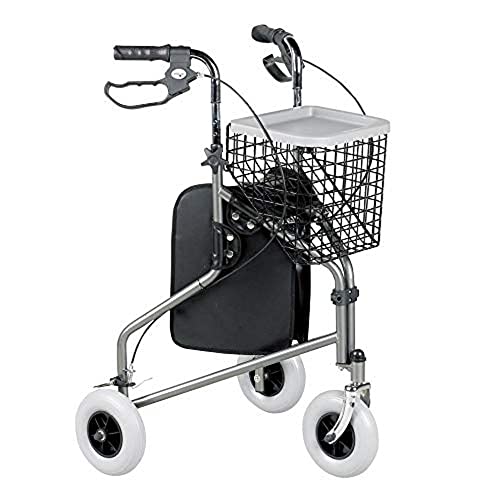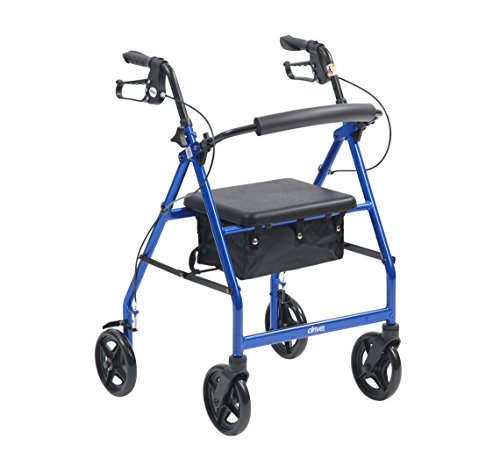- 10.04 8 Commonest Problems With Daycare Near Me By State
- 10.04 15 Terms That Everyone Who Works In Asbestos Attorney Industry Should Know
- 10.04 15 Top Twitter Accounts To Discover More About Asbestosis Asbestos Mesothelioma Attorney
- 10.04 Take 10 Minutes to Get Began With Daycare Near Me By State
- 10.04 15 Amazing Facts About Asbestos Cancer Lawsuit Lawyer Mesothelioma The Words You've Never Learned
- 10.04 8 Commonest Problems With Daycare Near Me By State
- 10.04 15 Terms That Everyone Who Works In Asbestos Attorney Industry Should Know
- 10.04 15 Top Twitter Accounts To Discover More About Asbestosis Asbestos Mesothelioma Attorney
- 10.04 Take 10 Minutes to Get Began With Daycare Near Me By State
- 10.04 15 Amazing Facts About Asbestos Cancer Lawsuit Lawyer Mesothelioma The Words You've Never Learned
- 10.02 ❤️골라먹는 20 대 맛❤️노 콘⚡입 싸⚡질 싸⚡알까 시⚡똥까 시⚡기본Free❤️질질 싸는 매니져❤️자택 모텔 출 장가능❤️
- 10.02 ❤️골라먹는 20 대 맛❤️노 콘⚡입 싸⚡질 싸⚡알까 시⚡똥까 시⚡기본Free❤️질질 싸는 매니져❤️자택 모텔 출 장가능❤️
- 10.02 ❤️골라먹는 20 대 맛❤️노 콘⚡입 싸⚡질 싸⚡알까 시⚡똥까 시⚡기본Free❤️질질 싸는 매니져❤️자택 모텔 출 장가능❤️
- 10.02 ❤️골라먹는 20 대 맛❤️노 콘⚡입 싸⚡질 싸⚡알까 시⚡똥까 시⚡기본Free❤️질질 싸는 매니져❤️자택 모텔 출 장가능❤️
- 10.02 ❤️골라먹는 20 대 맛❤️노 콘⚡입 싸⚡질 싸⚡알까 시⚡똥까 시⚡기본Free❤️질질 싸는 매니져❤️자택 모텔 출 장가능❤️
Rollator Folding Tools To Streamline Your Daily Lifethe One Rollator F…
 Stacy
댓글
0
조회
7
작성날짜
10.03 22:34
Stacy
댓글
0
조회
7
작성날짜
10.03 22:34
 Locking Mechanism For Use With a Foldable Rollator
Locking Mechanism For Use With a Foldable RollatorMost rollators have some sort of locking mechanism or latch to stop them from unfolding while in storage. This is vital to prevent an ensuing danger during transportation.
The lock is usually situated in the middle of the frame. It could be a lever or a button. It is crucial to know how to operate this feature.
How to fold a rollerator
Rollators are extremely efficient mobility aids designed for those who require stability and support when walking. Rollators are portable, convenient and come in a variety of models that can be adapted to various budgets and requirements. 1 However, some people might be worried about how to fold and unfold a rollator in order to make it safe to use.
Most modern rollators tri walkers have easy-to-use mechanisms for folding. They allow users to quickly fold their walkers without any tools, making them perfect for storage and transport. Moreover, the locking mechanism ensures that the folded walker will not open during storage or transportation which provides safety and security for users.
Modern rollator walkers aren't only easy to fold, but they also come with ergonomic designs that guarantee the safety and comfort of the user. They come with a large basket, comfortable handles, and a brake lever that is designed to prevent accidental activation. In addition, they are made of best lightweight rollator materials to guarantee the ability to move around and are easy to handle.
Traditional rollators, on the other hand, are heavier and don't fold themselves making them difficult to store or transport. Their seats are also attached to the frame, which means they cannot be stored against objects or in narrow spaces. It is essential that those who use rollators know how fold them for easy storage and transportation.
 The first step to fold a rollator is to find the locking mechanism. It's usually in the middle of the frame. Once you have located it, gently lift or release it in accordance with the instructions of the manufacturer. Once the locking mechanism is removed then you can fold the walker by pressing the sides in tandem while holding the releases. Continue to do this until the walker is fully folded and securely locked.
The first step to fold a rollator is to find the locking mechanism. It's usually in the middle of the frame. Once you have located it, gently lift or release it in accordance with the instructions of the manufacturer. Once the locking mechanism is removed then you can fold the walker by pressing the sides in tandem while holding the releases. Continue to do this until the walker is fully folded and securely locked.In addition to ensuring that the lock is secure In addition, you must inspect your walker for loose components and indications of wear or damage. If you find any problems make sure you repair them as soon as possible to avoid further injury and damage. Lastly, it is recommended to lubricate regularly all moving parts of the walker in order to reduce friction and maintain the smooth operation.
The Crossbar
The crossbar is a bar that is used to support the frame and wheels of a Rollator folding. It is typically made of steel and connects the handlebars to the frame's base. The crossbar offers additional strength and stability and holds the walker's basket as well as other attachments. Many manufacturers offer additional accessories, like baskets for storage and totes, for their walker model. They can be affixed to the front or back of the walker, or can be placed under the seat.
Many walker models have an adjustable crossbar that folds in two directions, making them much easier to transport and store. This is a crucial feature, especially if are planning to use the walker for frequent trips or long journeys to the supermarket or other locations. Additionally, certain models of walkers include a carry bag for additional storage space.
The brakes are a crucial feature of a rolling walker. They are typically located on the handles and crossbar. There are a variety of brake systems available, including push-down and cable loop. To stop the walker from rolling, the user must apply downward pressure to the spring-loaded frame. This kind of system may not be suitable for smaller users who may struggle to engage the brakes, or heavier users who might unintentionally activate the brakes without knowing it.
A cable loop brake system works more like the brakes on bicycles. The cable loop brake system is activated by simultaneously squeezing the handlebars in both hands. This type of brake system is better appropriate for people with limited hand movement, and provides more control than brakes that push down.
The term "crossbar" is used to describe one vertical stroke that is a cross between two strokes within a letterform. The location, length and width of a crossbar will affect the readability of any letterform. This is a major distinction between serif and non-serif fonts. The crossbar that is on the small e is commonly referred to as an arm.
The Release Mechanisms
Rollators are a great method to increase mobility and independence for those who have physical limitations. This innovative stability helps distribute the weight of the user evenly across their lower body, reducing strain to joints and muscles and allowing easy and comfortable movement. With adjustable features such as handbrakes and handlebars that can be adjusted, built-in seats, and storage compartments, they make it easier for users to move around their environment with comfort and confidence. Additionally, these light and mobile mobility aids are typically covered by Medicare or Medicaid to help with affordability.
Carbon rollators are easier to store or transport than traditional walkers rollators. They fold in half and can be placed in the trunk. To do this, take off the basket and pull it up on the crossbar to expose two release mechanisms on each side of the frame. Then, press the release mechanisms, and push the sides of the frame until the walking device shrinks to its smaller size.
The locking assembly is connected to a support arm on top that is substantially horizontal, 218 which joins two front and rear tubular legs that are vertical. Releasably connected to the ends of the front and rear tubular legs are telescoping tubular leg extensions 226 and 228, respectively. Telescoping extensions can be moved from an unlocked position to the locked position to adjust the height.
After the extension leg segments are in the correct position, a non-sliding hand grip is attached to the end of the lever that is actuated. The actuating lever attaches to the housing by way of an extension portion that extends away from the frame, and a recessed portion dimensioned to accommodate the extension piece. The recessed part and the extension piece serve as an axis on which the actuating lever may be pivoted.
Once the leg segments that telescoping are in the proper position, the locking mechanism engages the snap button and biasing spring (not shown). This arrangement allows the user to quickly engage or disengage the folding mechanism, which allows for a simple storage and transport of the walking aid.
The Locking Mechanism
The present invention relates to a locking mechanism to be used with the foldable rollator or walker. The invention solves the need for a lock for use with rollators and walkers that is easy for people who have limited mobility to set up between folded or unfolded positions.
In general, the device consists of two side frames with an interlocking cross brace. It also comes with two handle bars. Two hand brakes are fixed on the handles. Each has a pin actuating plunger that engages with the plunger on a respective cross bar. As the user pushes the hand brakes, the pin actuating plunger is depressed, thereby creating a side frame that can fold into a position.
This type of device has an issue in that the actuating handle must be held in one hand while trying to push the plunger that is pin-actuated. This can be problematic for persons with limited hand strength and/or dexterity. The present invention solves this issue by providing the locking assembly operationally connected to the lever for actuation.
As illustrated in FIG. as shown in FIG. A lock plate is placed inside the bore. It has an opening that can accommodate the locking end of the locking pin. A portion of the actuating lever between the handle that applies force end and the body attaching portion is configured to pivot relative to both body components so that the locking pin can be moved from a position where it blocks the rotation of the tubular leg, and a position where the leg extension telescoping can be extended.
When the actuating handle is manipulated and the locking pin is moved from the first to the second position. As a result, the leg extension that telescoping is able to be removed from the side frame and thereby rotates the latter into its folded position. This process can be accomplished with the hand of the user is still securely gripping the handgrip 24 on the side frame. This feature can reduce the amount effort required to fold and unfold a rollator.









